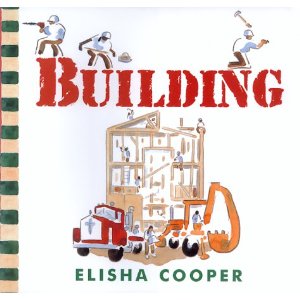 Written by Jennifer L. Holm
Written by Jennifer L. HolmIllustrated by Matthew Holm
(Random House, 2009)
I’m not a fast reader. In fact, I strongly discourage people from trying to race through a book in much the same way they’d attack a math drill. Reading is as much about thinking and responding to text and pictures as it is tackling a passage with fluency. And yet I will admit with this book, there is something immensely satisfying in finishing a ninety-page book in the time it takes to read a picture book.
Babymouse Dragonslayer is one of a graphic novel series developed by the brother-sister team of Jennifer and Matthew Holm. I first learned of the series when I took some students on a shopping expedition at a children’s bookstore. A grade two boy was on a Babymouse quest. He could not listen through the staff member’s orientation or the introduction of specially set aside hot, new books. “Where is Babymouse? Do you have Dragonslayer? What about Babymouse Burns Rubber?” It was Babymouse or bust.
For a young reader, working through this book instead of a basic reader instills a sense of pride and builds on one’s identity as a reader. It also provides a bridge from picture books to novels: more words, more pages, but also a picture for virtually every sentence or speech bubble. Hurrah for graphic novels!
Poor Babymouse feels doomed by math problems. She is hopeless. Her latest failing math test proves it. (Never mind that she spends math class daydreaming about saving a kingdom from a ruthless dragon.) To her horror, her teacher insists that Babymouse spend her lunch hours on the school’s Mathlete Team, the Fighting Fractions. The team is preparing to compete against the Hypotemooses and the mighty, all-knowing and downright mean Owlgorithms. The stakes are high. Long ago, the Owlgorithms “snatched the Golden Slide Rule and carried it back to their lair, turning it to their own nefarious purposes.” How, oh how, can the Fighting Fractions expect to emerge victoriously with the befuddled Babymouse in their midst?
While Babymouse dreads math, she loves reading. She transports through her locker into the world of The Lion, the Witch and the Wardrobe. She stumbles upon Middle-earth. Imagine the Cool Factor a few years down the line when the reader discovers that Babymouse gave a nod to the classics. (“Hey! C.S. Lewis copied this from Babymouse!”) It is yet another way Babymouse Dragonslayer helps readers approach new hurdles.
Some boys may be turned off the series based on its design. The cover and the pages within contain black and white drawings washed in—gasp—pink. While Laverne of sitcom fame always wore a cursive L, Babymouse sports a pink heart on all her clothing. If these superficial components create initial resistance (and, my gosh, let’s hope they don’t), all it takes is a buddy or an eager adult to join in with the reading of the first ten pages. I suggest taking parts. Let one person say all Babymouse’s lines while the other creates a distinct voice for the narrative boxes. Partners could then divvy up the other parts as they arise.
The illustrations are great fun. I particularly enjoyed a wordless page of four cells that showed how the Mathlete competition whittled down to the final contestants. Yes, you have to read the pictures. There is also subtle and more obvious humor throughout. My favorite exchange: One character, feeling doomed about the pending showdown says, “This is our darkest hour.” Babymouse responds, “Well, it IS almost dinnertime.”
I can see readers going back for seconds and thirds of this book, zipping through it with increasing speed and comfort while awaiting the next installment. Babymouse, the reading superhero!










